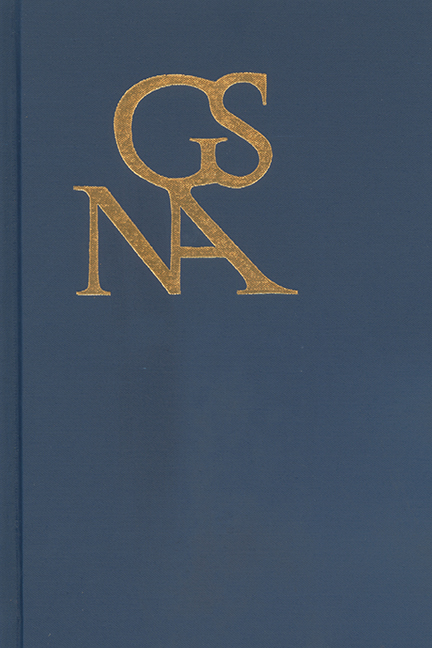Book contents
- Frontmatter
- Contents
- Building Bridges: Goethe's Fairy-Tale Aesthetics
- Goethe as Mystagogue
- Observing Neutrality, circa 1800
- Goethe, Faust, and Motherless Creations
- Impossible Ideals: Reconciling Virginity and Maternity in Goethe's Werther
- Kant, Calculus, Consciousness, and the Mathematical Infinite in Us
- The Classical Aesthetics of Schlegel's Lucinde
- Special Section on Visual Culture in the Goethezeit
- Book Reviews
Building Bridges: Goethe's Fairy-Tale Aesthetics
Published online by Cambridge University Press: 25 February 2017
- Frontmatter
- Contents
- Building Bridges: Goethe's Fairy-Tale Aesthetics
- Goethe as Mystagogue
- Observing Neutrality, circa 1800
- Goethe, Faust, and Motherless Creations
- Impossible Ideals: Reconciling Virginity and Maternity in Goethe's Werther
- Kant, Calculus, Consciousness, and the Mathematical Infinite in Us
- The Classical Aesthetics of Schlegel's Lucinde
- Special Section on Visual Culture in the Goethezeit
- Book Reviews
Summary
IN MY FIRST COURSE WITH STUART ATKINS, German Romanticism it was, the first text on the syllabus was Goethe's “Das Märchen” (The Fairy Tale) and the last was his Novelle (Novella). This essay begins to address what I learned from those choices. It also addresses another experience I had with an equally eminent scholar who shall, however, remain nameless here. That person asked me what my favorite Goethe text was, apart from Faust. Floored, I finally said, “the Märchen.” “Wrong!” came the answer, “Die Wahlverwandtschaften (Elective Affinities).” What was I thinking? I was identifying what seemed to me the most paradigmatic, the most Goethean, of Goethe's works, while my interlocutor was identifying the work that spoke most directly to the turn of the millennium. Today I want to see what might be learned from my answer and to show how Goethe's fairy tale illuminates some of his less paradigmatic works. In fact, I want to claim that fairy tale is Goethe's basic modus operandi, even though he wrote only three of them (“Das Märchen,” “Die neue Melusine,” and “Der neue Paris”). I made a comparable argument once for “Hexenküche” (Witch's Kitchen) as the paradigm for Goethe's new conception of Faust when he returned to the work in Italy. I now think that this scene with its talking animals and witch comes from the realm of fairy tale; furthermore, I will argue shortly that the “Märchen,” like “Hexenküche,” also evokes Goethe's Italian experiences. I will begin with a reading of it and then discuss another of Goethe's fairy tales, “Die neue Melusine” from the Wanderjahre (Wilhelm Meister's Journeyman Years), to show not only the centrality of the genre for Goethe but also what it means that he took this arch-Romantic genre so seriously.
Goethe's contemporaries were both baffled and delighted by the “Märchen,” published in 1795 as the end of Unterhaltungen deutscher Ausgewanderten (Conversations of German Refugees). Two things seem fairly obvious to scholarly readers now: first, that it can be interpreted less in terms of its symbols than of its general structure and, second, that it responds to the French Revolution, the central political event for the Romantic generation and subject of the Unterhaltungen. Goethe describes how to purify monarchy rather than abolish it and how to control the mayhem of the Revolution.
- Type
- Chapter
- Information
- Goethe Yearbook 23 , pp. 1 - 18Publisher: Boydell & BrewerPrint publication year: 2016

